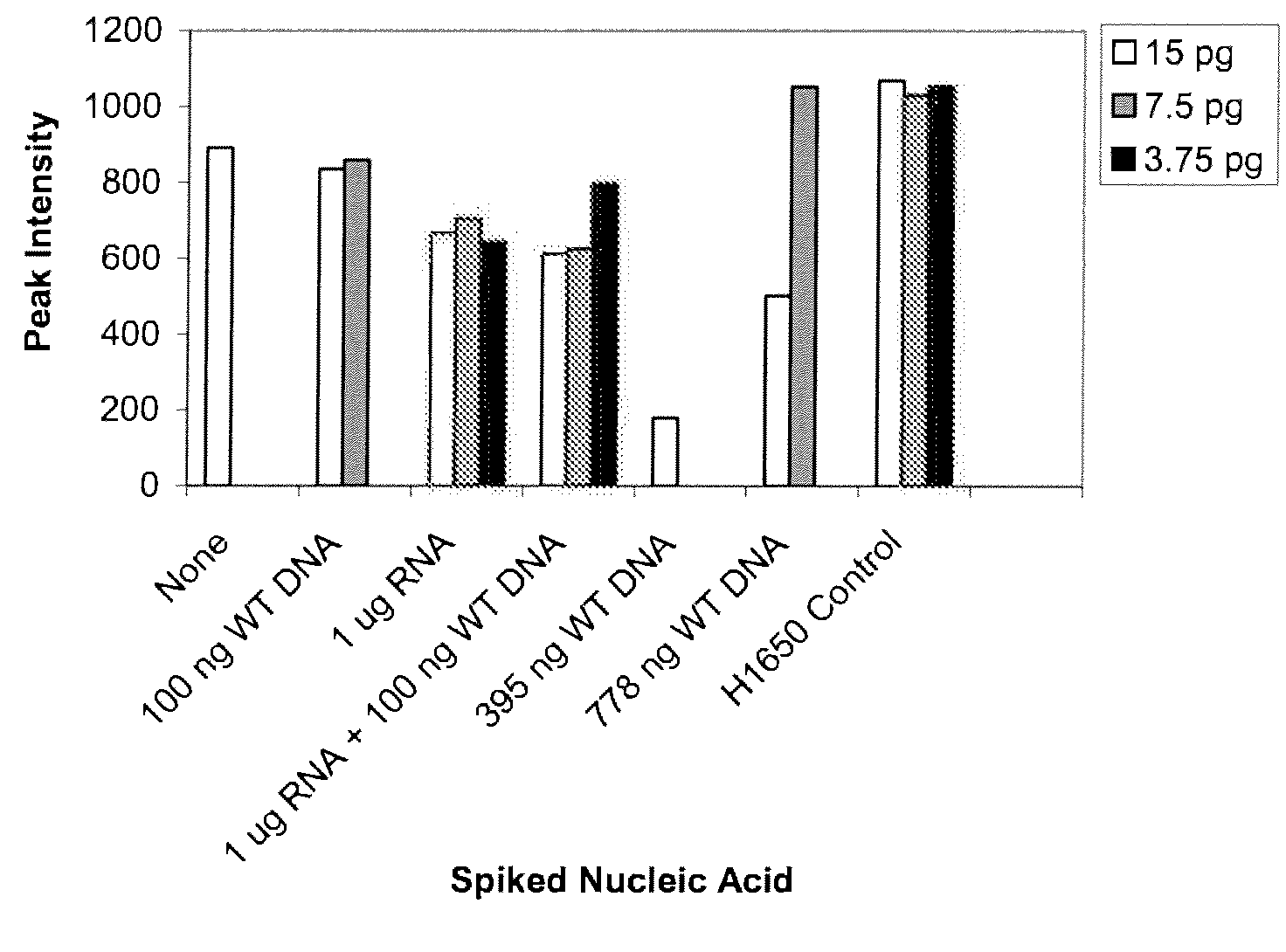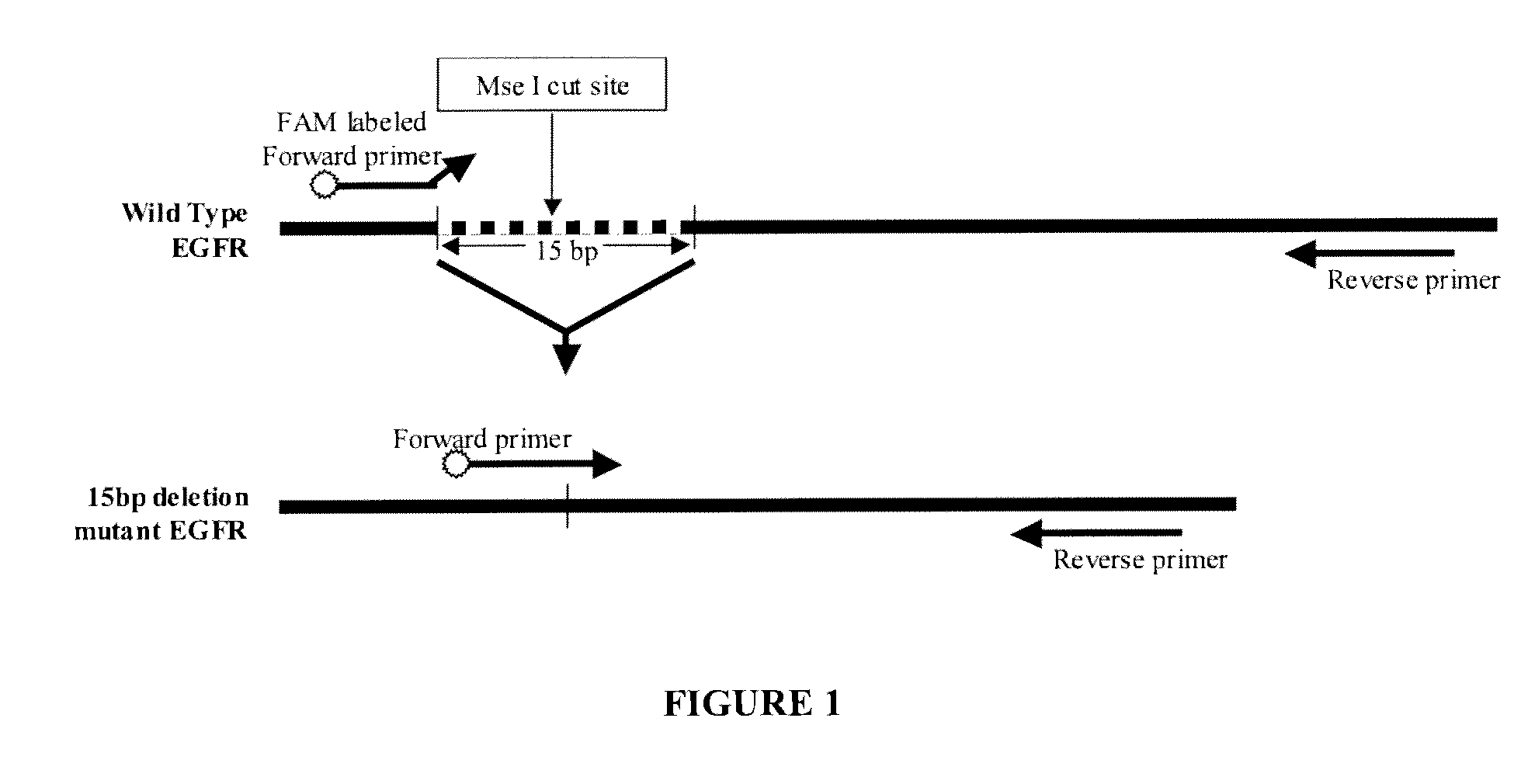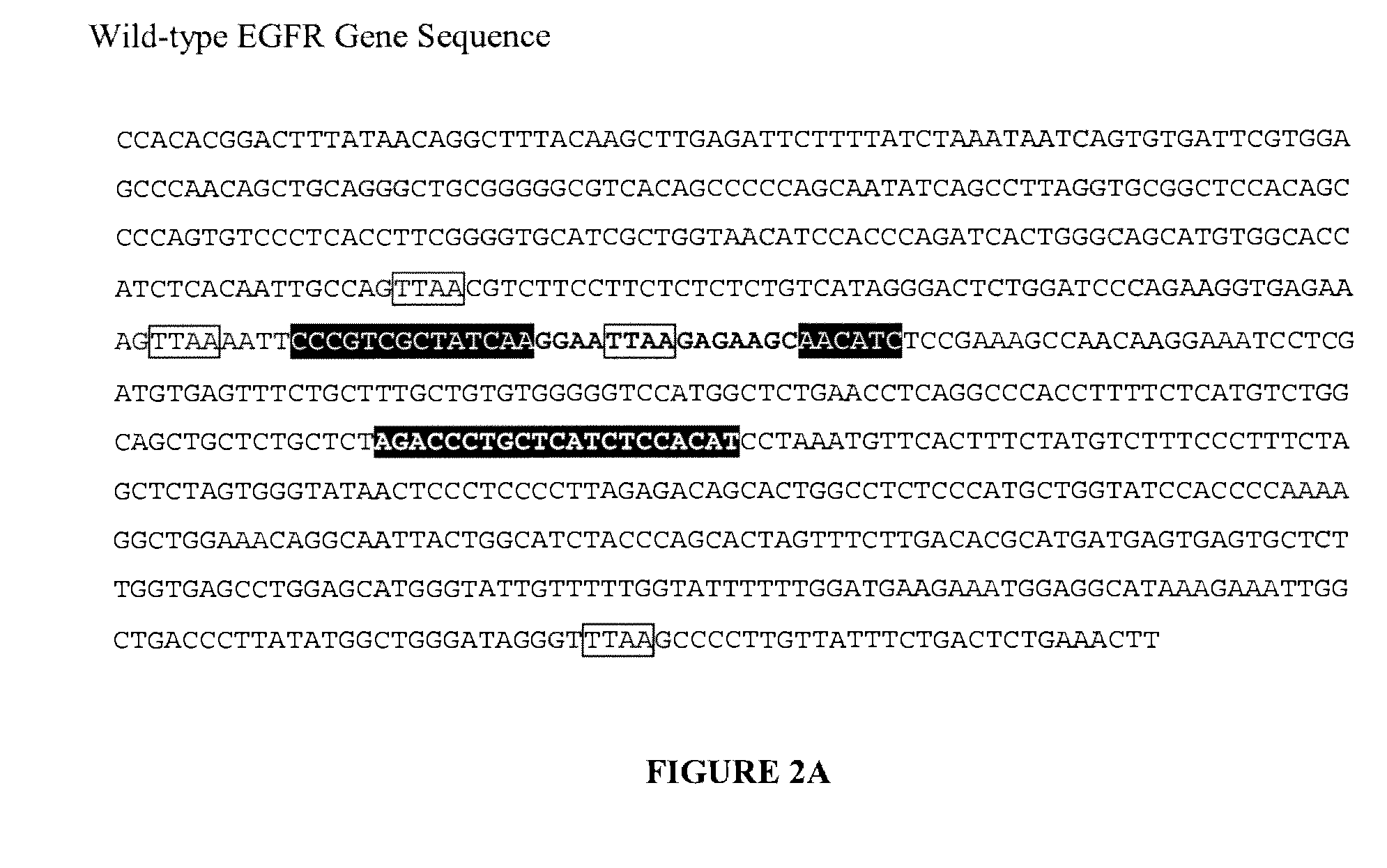Nucleic acid detection combining amplification with fragmentation
a nucleic acid and fragmentation technology, applied in the field of methods and compositions for detecting target nucleic acids, can solve problems such as restricting the flexibility of the ribofuranose ring, and achieve the effect of increasing detection
- Summary
- Abstract
- Description
- Claims
- Application Information
AI Technical Summary
Benefits of technology
Problems solved by technology
Method used
Image
Examples
example 1
E746_A750 Deletion
[0180]Background: Somatic mutations in the tyrosine kinase (TK) domain of the EGFR gene are associated with clinical response to TK inhibitors in patients with non-small cell lung cancer (NSCLC). An assay that detects such mutations in plasma provides a noninvasive procedure to assess suitability for TK inhibitor therapy. Described below are 1) the development of a sensitivity assay to detect the E746_A750 deletion (E746_A750del) in the TK domain of EGFR in plasma; and 2) optimization of the assay for plasma DNA extraction.
[0181]Methods: The assay uses MseI to specifically digest wild-type (WT) genomic DNA (gDNA) to reduce non-specific amplification. After digestion, samples are PCR-amplified using one unlabeled primer and one FAM-labeled primer spanning the E746_A750 deletion region. The fluorescence signal is detected with an automated genetic analyzer. Serial dilution studies were conducted using H1650 gDNA, which is a E746_A750 deletion cell line) diluted in WT...
example 2
Preparation of and Sensitivity Studies for Detection of EGFR Mutations
[0184]Serial dilution studies were conducted using H1650 gDNA (E746_A750 deletion mutation cell line) diluted in wild-type gDNA with no treatment of after MseI digestion. For each dilution, 10 pg of H1650 gDNA. H1650 is a heterozygous cell line, thus, 50% of the DNA contributes to the deletion allele and 50% to the wild-type allele) was spiked into wild-type gDNA at varying concentrations to yield 0.001%-10% of the exon 19 deletion in the background of wild-type allele. Nucleic acid is spiked into a sample in order to control the amount of target nucleic acid in a sample and test the sensitivity of the assay to detect various amounts, in particular low amounts, of target nucleic acid. The results show that peaks were detected corresponding to the deletion mutant at levels of 0.01% in non-treated samples and at least 0.001% when digested with MseI. These results are presented in Table 1.
TABLE 1Exon 19 deletion tumo...
example 3
Method Comparison of EGFR Mutation Detection
[0186]A method comparison was performed to demonstrate the sensitivity of the EGFR mutation detection assay disclosed herein (also referred to as the Sanders method) which is designed to be able to detect mutations in plasma from NSCLC patients. In this study, the method disclosed herein was compared with two other methods (Asano, 2006 and Ohnishi, 2006) that claim high sensitivity for detecting E746_A750del. The Asano and Ohnishi methods were performed as described in the respective publications but included a fluorescent label on the forward primer. Amplification products were then analyzed by capillary electrophoresis for fluorescent detection of the PCR fragments using an ABI 3100 Genetic Analyzer. Table 3 shows the expected and observed fragment sizes for each fragment.
TABLE 3Expected and observed fragment sizesMethodFragmentExpected SizeObserved SizeSandersWild-Type EGFR197194E746_A750del153151AsanoWild-Type EGFR138135E746_A750del123...
PUM
| Property | Measurement | Unit |
|---|---|---|
| nucleic acid | aaaaa | aaaaa |
| fluorescent | aaaaa | aaaaa |
| real time | aaaaa | aaaaa |
Abstract
Description
Claims
Application Information
 Login to View More
Login to View More - R&D
- Intellectual Property
- Life Sciences
- Materials
- Tech Scout
- Unparalleled Data Quality
- Higher Quality Content
- 60% Fewer Hallucinations
Browse by: Latest US Patents, China's latest patents, Technical Efficacy Thesaurus, Application Domain, Technology Topic, Popular Technical Reports.
© 2025 PatSnap. All rights reserved.Legal|Privacy policy|Modern Slavery Act Transparency Statement|Sitemap|About US| Contact US: help@patsnap.com



